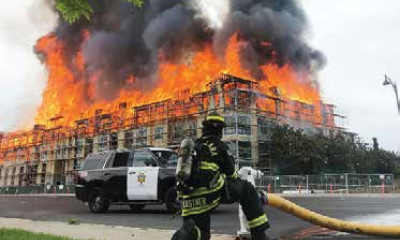A Private Adjuster's Perspective: Extra and Expediting Expense Coverages
 Extra and Expediting Expense Coverages
Extra and Expediting Expense Coverages
In a very real sense, extra and expediting expense coverages may be looked at as the reverse side of business income insurance (also known as business interruption; or use and occupancy).
“In a sense, extra expense insurance is the opposite of business interruption coverage. Business interruption insurance substitutes for or replaces the ordinary income derived from the operations of the business during a period when normal operations cannot continue. Extra expense coverage, on the other hand, provides the funds necessary to insure that the operations can be continued, thus allowing the business to continue to generate the earnings needed to cover fixed expenses and provide a profit.” (Insuring Real Property, Section 3.04(1), James R. Robie, et al., 1998).
It is extremely important to note that extra expense coverage provisions vary widely and an insured must read the policy to make sure it covers the particular and unique circumstances of the business. Again, READ THE POLICY.
Following is a typical grant of coverage:
“Extra Expense means necessary expenses you incur during the ‘period of restoration’ that you would not have incurred if there had been no direct physical loss or damage to property caused by or resulting from a Covered Cause of Loss.
We will pay extra expense (other than the expenses to repair or replace property) to:
- Avoid or minimize the ‘suspension’ of business and to continue operations at the described premises or at replacement premises or temporary locations, including relocation expenses and costs to equip and operate the replacement location or temporary location.
- Minimize the ‘suspension’ of business if you cannot continue ‘operations.’
We will also pay extra expense to repair or replace property, but only to the extent, it reduces the amount of loss that otherwise would have been payable under this coverage form. (ISO Form CP 00 30 10 12; emphasis mine)
Under this form, the following examples of costs would be covered:
- Those which are incurred to avoid or minimize a loss and are over and above ordinary fixed operating expenses such as:
- clean up overtime, temporary rent, relocation, increased advertising, increased shipping, reopening, etc. It is to be noted that ordinary operating expenses are covered, as continuing expenses, under a business income form.
- Those which are incurred to avoid or minimize the loss but are extraordinary and not usual to the business such as outsourcing to third parties.
- Those which are truly extraordinary and being incurred as a result of the catastrophe such as: security guards and fencing, unemployment benefits, or other charges by the State or under union contracts for employee layoffs.
To reiterate, the purpose of obtaining extra expense coverage is to ensure that the disruption to the insured’s business can be avoided or, at the least, minimized.
Under extra expense grants, the insured is entitled to recover these above-normal and/or extraordinary costs whether or not their incurrence has helped to reduce the business income loss. The only tests are whether the costs incurred were reasonable and necessary.
Expediting Expenses:
At this point, the author would like to call the attention of the reader to the final grant of expense coverage in the ISO form, to wit, the “the expense to repair or replace property….”
While the modern forms use the term extra expense, those who have been in the industry for some time, know this to be what was called expediting expense. An expediting expense has been defined as “the reasonable extra cost of temporary repair and/or replacement and/or expediting the repair and/or replacement of damaged property.” (cf. Business Income Insurance Disputes, Second Ed., Section 4.02 (B), page 4-20).
When claiming this type of extra (or expediting) expense, the insured will need to show that it has reduced the amount of the business income loss. The insured’s recovery under the policy will be limited to the amount of the loss shown to be reduced.
A caveat is appropriate at this juncture.
Some carriers have taken the position that, to obtain reimbursement for any extra and/or expediting expenses, the insured must show that the business income loss has been reduced in the same or greater amount. In positioning their argument, such carrier(s) rely on the language “…but only to the extent it reduces the amount of loss that otherwise would have been payable under this Coverage Form.”
Your author strongly disagrees with this supposition. It is to be clearly noted that this limiting language is situated directly below the expediting coverage grant and not in a location where it can reasonably be read to modify the other two benefits. Furthermore, the word also is used in this limited grant thereby clearly distinguishing it as being distinct and different from provisions (1) and (2).
Had these carriers wanted to so limit recovery of any and all of the “over and above ordinary/extraordinary” incurred costs, they could have easily done so by placing the reduction of income loss requirement as a preamble to their coverages or in a position where it clearly modifies all of the coverage grants and not just the third one.
A few closing remarks:
Extra expense coverages may be purchased as a stand-alone policy or within a business income form. The limit for extra expense coverage may be included within the limit of the business income form or a stand-alone amount as a sub-limit. The terms, conditions, and provisions for extra expense coverages vary greatly from form to form and company to company.
Statistics show that, after a catastrophe such as a fire, anywhere from 40 percent and up of businesses never reopen due to lack of funds. Business income and extra expense insurance are excellent weapons to guard against—or, at least, minimize—the effects of this happening.
It cannot be underscored enough that business owners should consider the types of insurance coverage mentioned herein and, if they elect to do so, they must READ THE POLICY to make sure that they are appropriate for the business and circumstances.
Extra and Expedited Expense Coverage
Featured Case Study
ABC Inc. owned a sit-down café style restaurant and bakery. A disastrous fire completely destroyed the building and equipment, the doors were closed and the business shuttered. (Location 1).
Adequate insurance existed for the owner/insured to rebuild, replace, and reopen the facility. It was estimated—and agreed—that the restaurant would not be ready for a reopening and resumption of business for at least 12 months.
Approximately one mile away from the destroyed premises, sat a shuttered, somewhat reasonably furnished sit-down restaurant (Location 2). It was not exactly what the insured wanted, being much larger and more formal than what the insured had and wanted to rebuild. Nevertheless, the insured felt that, temporarily, it could serve his existing clientele until the actual rebuild was done.
The Greenspan Co./Adjusters International prepared a pro forma business income loss claim for the insured showing that, over the 12-month rebuild period, he would be entitled to recover from his carrier a minimum of $1.5 million in lost net profits and continuing expenses. The insured had a more than adequate business income policy, its limit is over $2 million with extra expense being built in.
With the help of The Greenspan Co./Adjusters International, it was also determined that the shuttered restaurant (Location 2) could be bought and opened for a cost of $500,000. This spending would include the purchase of all of the existing furnishings and equipment and the leasing of the premises for a year.
Financial modeling also showed that, by spending $500,000 for this acquisition, the insured would reduce his projected income loss, from Location 1, for the year from $1.5 million to $750,000.
On behalf of the insured, The Greenspan Co./Adjusters International approached the carrier, presented the pro forma loss statement/claim financial modeling, and explained how, by paying $500,000 in extra expense to enable its insured to purchase Location 2, the carrier would be reducing its income loss exposure by $750,000 and its overall payout by $250,000.
To put it another way, by paying the insured $500,000 in extra expense for the Location 2 purchase and $750,000 for the Location 1 income loss, the carrier would pay $1,250,000 versus $1.5 million. Showing a savings of $250,000, it made perfect sense to all the parties involved.
The deal was signed and the plan moved forward successfully. After one year, Location 1 was rebuilt and reopened to much fanfare.
By paying out $500,000 in extra expense, the carrier became the owner of Location 2’s equipment and furnishings. The carrier, not wanting to be in the restaurant business, having no use for the property, and knowing that it would only bring salvage price, made a deal with the insured. For a $50,000 credit against his claims, the insured kept everything at Location 2.
So, when all was said and done, the insurer paid less (happy insurer), the insured owned two thriving restaurants instead of one (at no cost to himself), suffered no economic losses as a result of the fire, and became another happy The Greenspan Co./Adjusters International client.






